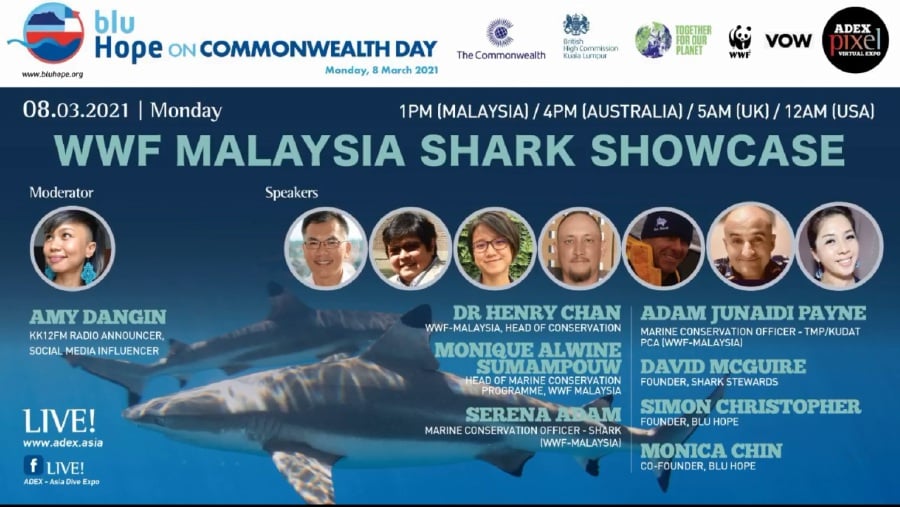By Olivia Miwil - March 8, 2021 @ 7:37pm
KOTA KINABALU: There is a need to look beyond protected areas for the conservation of sharks and rays, said marine scientist Adam Junaidi Payne.
The WWF-Malaysia research conservation officer added that based on a five-year Global Fin Print Study that was completed last year, the survey concluded sharks are only abundant in Sipadan.
The world's largest reef shark survey also covered Perhentian and Tioman islands in west Malaysia, as well as Sipadan,Tunku Abdul Rahman Park and Tun Sakaran Park in Sabah.
"Results showed only 18.4 per cent of recorded sharks, most abundant in Sipadan, which is already a protected area.
"Malaysia has a great potential to increase its shark population when good management and enforcement measures are put in place.
"While monitoring and protection are crucial, we have to look into other areas which are beyond the protected areas," he said during the Blu Hope Commonwealth Day webinar on WWF Malaysia Shark Showcase.
Also participating in the webinar were WWF-Malaysia conservation head Dr Henry Chan, WWF Malaysia marine conservation programme head Monique Alwine Sumampouw, marine conservation officer for sharks Serena Adam, Shark Stewards founder David McGuire and Blu Hope co-founders Simon Christopher and Monica Chin.
Serena said there was a need to find balance between the protection of those species and the livelihood of the coastal community for sustainable conservation efforts.
She said the biggest threat for sharks in Malaysia was usually due to overfishing when those species were caught along with other commercial fish.
"Although sharks and rays are mostly considered as by-catch, it may not necessarily be the case.
"There are also studies showing that there is socio-economic importance for coastal communities, who rely on (sharks) as their diet which they consume once or twice a week," she said.
Serena added that the prices of those species are dependant on different states and fishing gear being used.
Rays can be sold between RM5 and RM16 per kilogramme, while sharks fetch RM2 to RM12 per kilogramme.
She also attributed the usage of trawls, gillnets and longlines as responsible for the bycatch.
The researchers are now testing the efficiency of using the light-emitting diode method in the Tun Mustapha Park in Kudat, as well as comparing the usage of traditional C-hook and conventional J-hook at Mabul in Semporna to minimise the impact of bycatch of sharks and rays.
There are more than 1,000 species of sharks and rays worldwide with a quarter of them are now threatened with extinction due to unsustainable fishing practices.
In terms of the WWF-Malaysia marine programme, studies have shown that there are 22 species of sharks and 41 species of rays threatened with extinction.
The non-governmental organisation's goals in 2030 is to have the interaction of key shark species and fishing activities to be minimised through effective management from the 2022 baseline.

Comments
Post a Comment